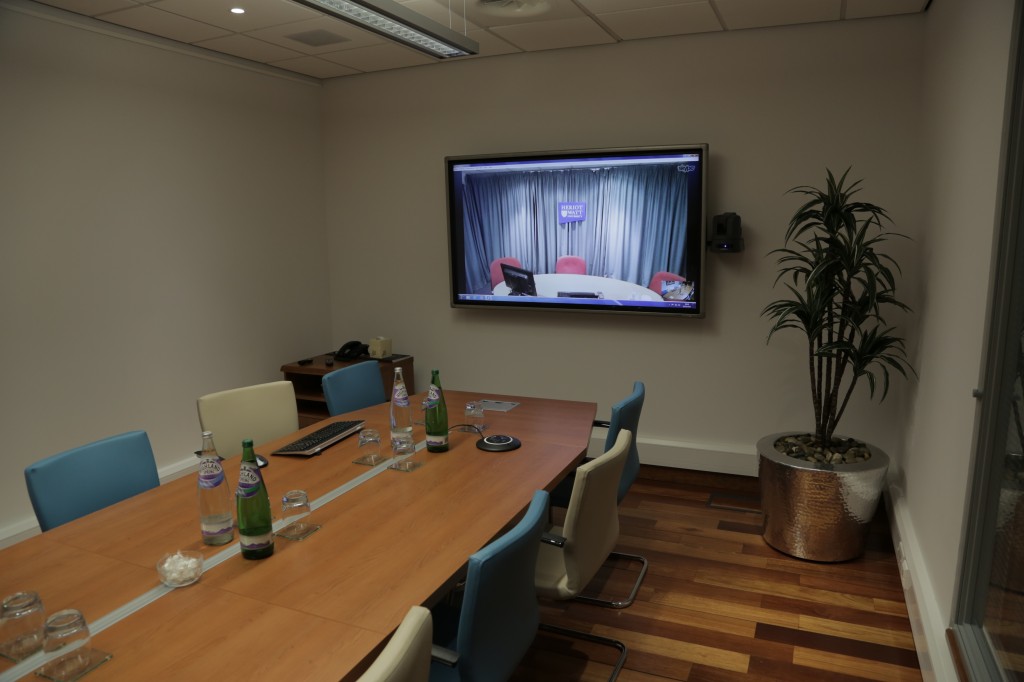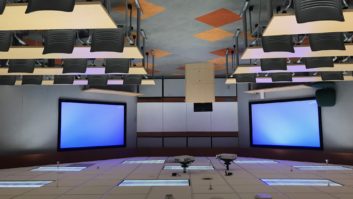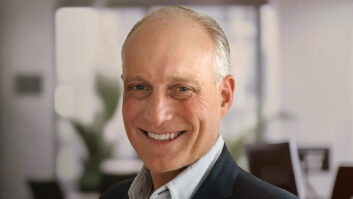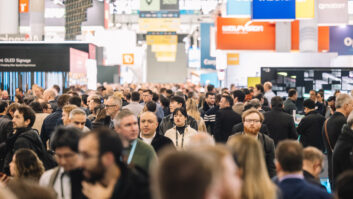
Heriot-Watt University has installed Vaddio equipment to help bridge the burgeoning gap between the capabilities of its existing videoconferencing solution and the evolving needs of a globally dispersed student body.
Located on the outskirts of Edinburgh, the university was an early adopter of web technologies to enhance classroom learning and to extend the reach of its programmes across international borders. Today, Heriot-Watt boasts one of the world’s largest distance-learning MBA programmes, offered through its Edinburgh Business School.
More than 7,500 graduate students on campuses in Scotland, Dubai, and Malaysia now participate in accredited business and international business curriculums. Students around the world have access to different computing platforms and individually prefer a number of productivity apps and tools to fit their unique learning styles.
The university needed a cost-effective, efficient solution to meet the diverse needs of its international student body. To accomplish this, it installed a Vaddio ClearVIEW HD-USB PTZ camera, Vaddio EasyUSB Mixer/Amplifier, and Vaddio EasyMic MicPODs in its primary meeting room on the Edinburgh campus to create an accessible and easily supported collaboration environment.
“With a geographically dispersed and diverse student body like ours, it’s important for students to be able to use whichever collaboration tools they feel are most valuable,” said Douglas Marsland, manager of AV services at Heriot-Watt University. “Vaddio systems transcend the capabilities of traditional conferencing systems to produce a high-quality, interactive meeting experience without technical limitations.”
According to Marsland, it wasn’t uncommon in the past for faculty members and graduate students eager to squeeze collaboration sessions into their busy schedules to take set-up matters into their own hands. Many used store-bought webcams and free videoconferencing services along with their devices in order to use desktop apps in an online session.
“Using a free service, consumer-grade webcam, and built-in microphone is fine for two people just having a chat,” Marsland says. “But implementing that set-up into a professional or academic group meeting environment yields fuzzy video and very low-quality sound that detracts from the experience.”
Instead, a blended environment leveraging Vaddio components and a videoconferencing system lets Heriot-Watt community members everywhere use any application without having to worry about compatibility or interoperability issues, because their computer is the host station.
“We wanted to be able to adequately handle the full spectrum of software likely to be used in a meeting,” Marsland says. “The Vaddio camera and mixer are essential for enabling students to use Skype, Adobe Connect, WebEx, and other popular applications without sacrificing meeting quality or having to buy their own equipment.“
Heriot-Watt students, faculty, and corporate partners around the world had been accustomed to relying on an industry-standard videoconferencing system to facilitate meetings and class sessions online. While the quality of meeting audio and video were excellent, the telepresence system on campus required dedicated installation of expensive hardware components that required frequent maintenance by the university’s limited staff.
The team set out to find freestanding components that could deliver high-definition video and ultra high-quality audio when used in conjunction with emerging collaboration technologies. More importantly, the new devices needed to work seamlessly with and alongside the existing infrastructure to deliver unified communications and traditional videoconferencing capabilities in a single room.
“We evaluated a number of solutions with a variety of features and benefits,” Marsland says. “We turned to Vaddio because their products are affordable, simple to set up, and don’t require any special software to control them.”
Unlike the other systems, the Vaddio ClearVIEW HD-USB camera and EasyUSB Mixer/Amplifier products are USB-enabled computer peripheral components that greatly expand the capabilities and value of the school’s existing legacy system. Using only HDMI and USB cables, faculty and students can plug their PC, laptop, or tablet device into the Vaddio devices and transform it into a conferencing hub. Now, any Linux, iOS, or Windows-based device can produce a rich, highly interactive environment complete with high-definition video on a large-screen TV and high-fidelity audio through available speakers.
“Conventional videoconferences require a specific host station, preset configuration, and occasional help from staff to get a meeting going,” Marsland says. “With the Vaddio camera and mixer, anyone can just plug in their laptop or tablet, choose the apps they want to use, and begin sharing instantly.”
A platform-agnostic set-up is an ideal environment for the Vaddio ClearVIEW HD-USB pan/tilt/zoom camera, which increases levels of faculty engagement and collaboration. The high-powered wall-mounted camera features a motorised zoom lens for super-smooth pan/tilt control. Meanwhile, the integrated Sony Exmor sensor and 19x optical zoom combine to create highly detailed images and broadcasts them in 1080p, 1080i or 720p.
The Vaddio EasyUSB Mixer/Amp is specifically designed for use with videoconferencing software and produces a rich, full-range sound environment. Used with tabletop Vaddio EasyMic MicPOD or other speakers, the EasyUSB Mixer Amp connects directly to any PC or mobile device and features an I/O interface to enable seamless integration with external AV equipment such as videoconferencing codecs, external amplifiers or LCD displays.
“The combination of Vaddio HD cameras and audio components makes it easier than ever to produce a high-quality meeting experience without any of the hassle or cost of other systems,” said Marshland. “Other systems could compete on outputs or on price, but few could match the performance and value of the Vaddio products.”
Working under a tight timeline, Marsland and his team kitted out one of the university’s 16-person meeting rooms in 12 weeks. The team installed a 72in LCD display with touchscreen control system and the Vaddio USB Camera, Mixer/Amp, and MicPODs to work in parallel with the videoconferencing system.
“We wanted to encourage our faculty and leaders to adopt modern tools by removing the challenges and frustrations that can come with new services,” explained Marsland. “The Vaddio-based system accomplished both of those goals with an easy-to-use and completely transparent set-up for faculty, administrators, and students alike.”
While faculty members are enjoying a streamlined and simplified collaboration system, the AV department is also benefitting from a dramatic reduction in support and set-up requests. Supporting meeting room operations previously meant dispatching a staff member to the room directly for set-up and troubleshooting.
Marsland is keen to include similar equipment in future projects. “Vaddio technologies have been the missing pieces to bringing truly integrated unified communications and videoconferencing capabilities to our campus. This is going to be huge for our students and the university.”







